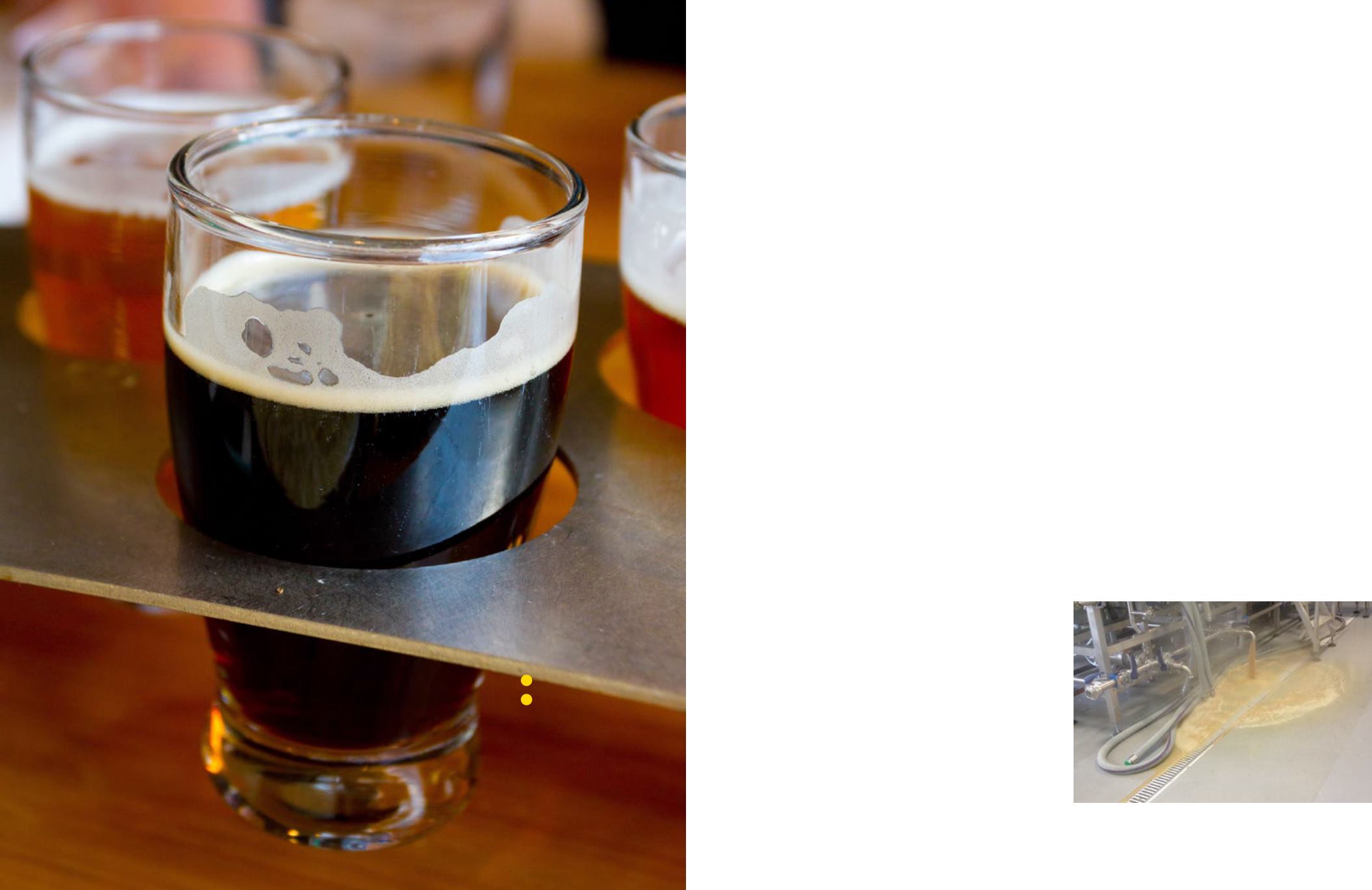
A
sk 10 different people what defines a
“Craft Beer”, and you might get 10
different answers. Some might mention
the size of the brewery, usually smaller in scale…
yet some craft brews, such as Samuel Adams, are
challenging that notion. Others might suggest
special variations on the recipe, but some craft
beers are made in the same way as many non-craft
beers.
To some degree, “Craft Beer” is a subjective
term. One interesting definition that seems to
capture the essence of the term calls it “beer that is
crafted, rather than manufactured”. It would seem
that its aficionados have no trouble recognizing
craft beer, but find it difficult to explain what it is.
Perhaps it’s best to define it not by what it is, but
rather by what it isn’t.
Most craft brewers differentiate their product
from what they typically describe as “bland” or
“lowest common denominator” beer. They prefer
a beer with character, a strong identity, and flavor.
This is what seems to be behind the recent explosion
in craft brewing in this country. Eric Ottaway,
General Manager of Brooklyn Brewery, sums it
up nicely: “Beer… had become fairly tasteless… it
was certainly well made, but it just didn’t have a lot
of flavor… people essentially re-discovered flavor.”
Absent a better one, we shall accept the
definition provided by the Brewers Association,
which cites three main criteria:
A craft brewery is generally regarded as:
• Small, with annual production of six million
barrels or less
• Independent, where less than 25 percent of
the brewery is owned or controlled by a member
or investor who is not a craft brewer
• Traditional, with an all-malt flagship brew,
or has at least 50 percent of its volume in all-
malt beers, or those who use adjuncts (additional
ingredients) to enhance rather than lighten flavor
That last bit dovetails nicely with the previous
comments. One factor that seems to govern craft
brewing is a respect for the old German beer purity
law known as the “Reinheitsgebot”. Enacted in
1516, it limits the ingredients to hops, barley, and
water. Craft beers don’t necessarily conform to it,
but they do seem to shy away from adjuncts such
as corn or rice. These are widely regarded as flavor
reducers, although some argue that it is not the
ingredients themselves that make the beer bland,
but rather the manner in which they are employed
in the brewing process. In any case, that sort of
debate is what makes it difficult to define craft
brewing with precision.
In recent years, craft brewing has done much
to polish up the tarnished image that beer has
suffered in so-called “polite” society, where it has
often taken a blue-collar back seat to wine as a
beverage considered appropriate for fine dining
and formal occasions. The irony here is that some
anthropologists are now challenging the long-held
view as to why humans transitioned from hunter-
gatherer nomadic tribes to agrarian societies that
eventually spawned human civilization.
It was originally supposed that some 10,000
to 15,000 years ago, people began to cultivate
grain in order to make flour and bake bread. This
triggered the societal shift toward villages and
ultimately, civilization. The new theory suggests
that humans did indeed start cultivating grain, but
for an entirely different reason: to make beer.
It’s based on the observation that fermentation
occurs naturally. Making bread from flour is a more
Superstorm
The Epilogue
By Linda Chodkowski
Craft Beer
Everything Old is Brewed Again…
by Charles Alexander
Flushing old yeast out of brewery tank
17


